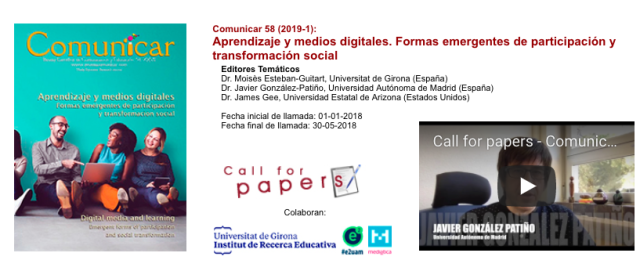Author: Ana Pérez-Escoda Translation: Erika-Lucia Gonzalez-Carrion
The growing importance of the scientific publications as formats of the science in the last years, have done that the expression «Call for papers» is assumed as a topic within the scientific-academic field with an outstanding importance for every investigator that aims to publish his or her works in the appropriate journal and in the number of the same that is adjusted the most to the lines of research.

It concerns with the Anglicism for the «Llamada de artículos» that depending on who convenes it, the proposal of the call will be different: a) it could suppose the announcement of submitting of the works that universities make when organizing congresses, symposiums, or academic meetings; or b) it supposes the public call that open the academic journals periodically (depending on the periodicity of the publication) giving the opportunity to researchers and academics of uploading their jobs, manuscripts, chapters and contributions to a digital platform, normally an OJS (Open Journal Systems) or platforms of editorial management, where the manuscripts start to make a peer evaluation for its evaluation and its subsequent publication.
The call for papers is published in the web page of the journal, but also is sent through distribution lists or newsletters, centering their attention in a concrete theme with some investigation topics to present numbers that concentrate the best articles in a relevant theme. Moreover, to reinforce the calls, we find the figure of thematic editor: are eventual editors of the journal, academics with a meaningful line of scientific development about the concrete theme that is called, fulfilling with the role of academic “hosts” of the call, that foster to the academic community to send their contributions.
Its structure varies according to the publications, in the traditional format it is given a title that defines the call in its themes and research lines, the title is followed by context lines, introductory to the theme that is proposed with some descriptors in the mode of a guide. However, with the proliferation of technology, there are found more updated versions where the thematic editors present videos explaining the call and fostering their colleagues to submit manuscripts.

The call has become, undoubtedly, in a key aspect in the agenda of every investigator that should observe in the net looking for the perfect call that is best adjusted to the research topics, valuing who emits the call and what is its proposal.
